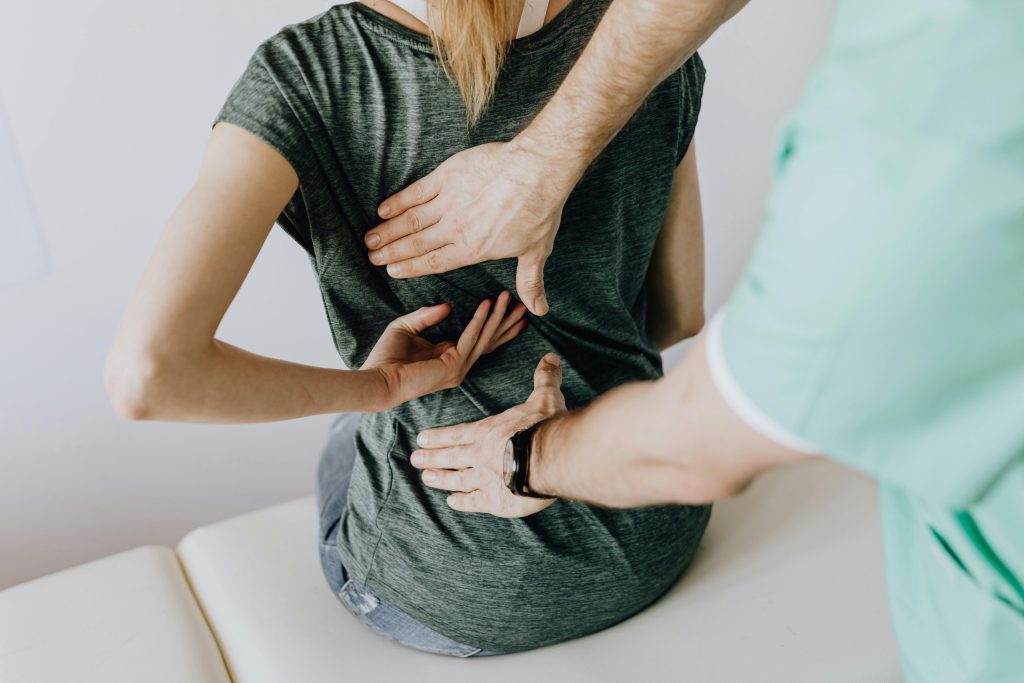
Last month of the year is here and for some it is time to look back at all of the achievements of 2023, good times or challenges and reflect upon it.
December can also be a very busy month with all the preparation for the holiday festivities or traveling. Did you know that some people can’t travel well due to back pain?
I didn’t until last month.
Last month I answered a business call and a soft voice asked if I offer any therapies for back health. My first instinct was to refer her to a chiropractor, but I paused and asked her to provide a bit more detail about her struggle.
Her story was touching as she has built a great career, raised her children and now she would like to travel and enjoy life a bit more. She has taken a couple trips, but the back pain is hard to take and it became an obstacle to sitting for a long time in an airplane/car, going sightseeing, visiting museums, taking hikes, all these great activities she was looking forward to doing all her life.
Pain meds really bother her stomach so she is searching for a holistic approach to it.
Back pain is no joke, and if you ever had it, you already know it.
But why is it so common and what is causing it?
For some of you it is injury or a condition you were born with, and that is a different topic, but for the majority is lifestyle and diet.
Allow me to explain, the vertebral column, or backbone, is made up of 33 vertebrae that are separated by spongy disks.
These disks have several important functions in the spine:
- Shock absorption
- Cushioning the spine
- Protection of the spine from damage during daily activities such as running, walking, and jumping.
These discs are surrounded by a ring.
With age the intervertebral disk might lose fluid and as this happens, the spongy disk becomes compressed. This may lead to the breakdown of the tough outer ring leading to bulging out. This is called a bulging disk.
If you take measures, you can prevent further deterioration. If ignoring the 1st signs, and allow the disc to further deteriorate, the risk consists in rupture, or herniated, disk, meaning fragments of disc material can then press on the nerve roots located just behind the disk space. This can cause pain, weakness, numbness, or changes in sensation. If this is how far the disease has gotten, it is qualified as a degenerative disease.
These types of back problems were common in people in their mid 70’s and older with rare cases seen earlier in life.
Now, they tend to be more common starting in their 40’s and sometimes even earlier than that. Low back problems occurring as early as age of 40, are now categorized as poor aging signs.
How can you identify it early?
I am a big proponent of being proactive and not reactive and I am seeing more and more clients who come to me for testing and prevention. What an excellent way to show yourself love and save money.
As you know healthcare is very expensive, but dealing with pain and missing out on living life is even worse than money spent on silencing the symptoms.
Signs that should not be ignored:
This is powerful because you might not have any significant signs in the beginning, but review the risk factors to make sure you are preventing.
One of the 1st signs is feeling pain somewhere in your back and this can include:
· Buttock,
· Upper thighs
· Lower back
· Neck
Pain may be sharp or nagging, and often or comes and goes
Pain also dissipates when moving
Pain often accelerates when sitting
Numbness and tingling in arms and legs
Prevention:
If you don’t have any pain or is just in the beginning stage, check the risk factors
Risk factors:
· Poor aging – protein and water makeup of your cartilage changes
· Sitting for hours without getting up
· Overweight
· Inflammation -as the disk deteriorates, the inflammatory proteins can leak out into the spinal column where they cause swelling and muscle tension.
· Lack of exercise
There is conventional treatment for degenerative disc disease, but no cure.
There are also natural remedies that will significantly reduce the symptoms allowing for improved quality of life
Some of the conventional treatments include:
– Painkillers and anti-inflammatory agents
– Physical therapy – you either move now free of pain or you move later while in pain
– Steroid shots
– Surgery
Natural remedies are more fun and much enjoyable:
– Stay active – yoga, walking, Pilates, swimming, hiking, all good ways
– Maintain a healthy body weight – for some is easier to do than others, but believe me when I say that it is possible for you too, and I can help you to get going, but you have to want to do it using a holistic approach, not diets
– Eat an anti-inflammatory diet
– Use cannabis oil – make sure it comes from reputable companies and is not contaminated
– Try natural painkillers such as peppermint oil
Since this is a degenerative disease, always consult with your doctor before trying any new treatment. Natural remedies used in conjunction with conventional treatment will insure you have a meaningful life.
Prevention is key!